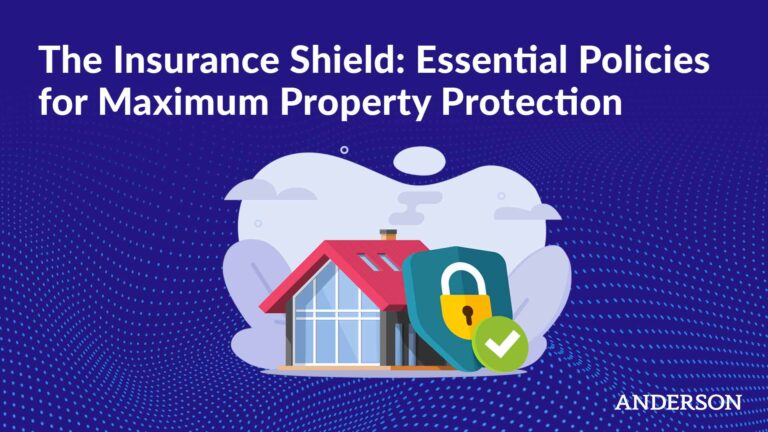
A 1031 exchange is a real estate investment strategy where you defer paying capital gains tax on a property you sell by putting the proceeds toward a like-kind property. If that seems a little esoteric, don’t worry. Here, we explain everything you need to know about 1031 exchanges, including what we mean by “like-kind” and the process of making an exchange.
Key Takeaways
- According to the IRS, properties are of like-kind when they’re of the “same nature and character.” Like-kindness has nothing to do with grade or quality, so most real properties are like-kind to one another.
- The Tax Cuts and Jobs Act of 2017 modified Section 1031 so that it applies only to real property — not personal or intangible property.
- Several rules are associated with 1031 exchanges. For example, the properties must fulfill business, trade, or investment purposes; their respective values should align; and the investor must adhere to specific deadlines.
- In exchanges involving at least three parties (which is most exchanges), the process must involve a qualified intermediary.
- It’s possible to conduct a 1031 exchange with jointly owned properties. The process is nuanced and can be quite complex.
- Several deductions, exemptions, and exclusions can be used to maximize the financial benefits of a 1031 exchange.
Tax & Asset Protection Workshop
Learn about Real Estate & Asset Protection at our next
FREE LIVE STREAM
Understanding the 1031 Exchange
The Revenue Act of 1921 established the 1031 exchange to encourage real estate investment. The rationale was that allowing entities to defer paying taxes on capital gains would incentivize them to continue investing in properties, thereby keeping money within the real estate market and promoting growth.
The rules on 1031 exchanges are subject to change. Indeed, they’ve changed quite a bit over the 100-plus years of exchange history. Most recently, per the Tax Cuts and Jobs Act of 2017, Section 1031 of the Internal Revenue Code now applies only to real property and not personal or intangible property. Assets such as machinery, equipment, vehicles, collectibles, artwork, and intellectual property don’t qualify.
This means that 1031 exchanges pertain specifically to like-kind properties, which the IRS defines as any real properties having “the same nature, character, or class.” That definition does not concern a property’s quality or grade but rather its use. With this in mind, most forms of real estate held for business, trade, or investment purposes are like-kind to one another. An apartment building, for example, is certainly like-kind to other apartment buildings, but it’s also like-kind to condos, rental homes, farmland, and raw land.
Aside from the rule concerning like-kindness, there are several other caveats to consider when making a 1031 exchange, as follows:
- Use: Because the definition of like-kindness refers to property use, the properties being exchanged must both fulfill a business, trade, or investment purpose. Personal residences don’t qualify.
- Location: The properties must be within the United States. Overseas property cannot be considered like-kind to property located on American soil.
- Titling: The same taxpaying party must purchase the properties involved in the exchange; otherwise, the exchange is invalid.
- Value: For the full tax benefit to apply, the property being purchased must be of equal or greater value than the one being sold.
- Timeline: After selling the exchangeable property, you have 45 days to identify potential properties to replace the one you’ve sold. After the 45-day mark, you must purchase a replacement property within 135 days to complete the exchange. The total time frame is 180 days from start to finish.
The 1031 Exchange Process
In every 1031 exchange, there’s a property being sold (the relinquished property) and one being bought (the replacement property). The entity making the exchange is the exchangor. The process of a 1031 exchange begins when the exchangor decides to sell a property in their portfolio.
The next step is to choose a qualified intermediary, which is an impartial third party that manages exchanges involving three or more parties. Because most exchanges involve at least three parties (the exchangor, the buyer of the relinquished property, and the seller of the replacement property), qualified intermediaries are an important part of the process.
After choosing a qualified intermediary, the exchangor can sell the relinquishable property. They must then identify a replacement property within 45 days and finalize the property purchase before the end of the 180-day window. Meanwhile, the qualified intermediary holds the funds in escrow and transfers them to the replacement property’s seller to close the deal.
The final step is to report the exchange to the IRS using Form 8824. The exchangor provides the principal details about the exchange and the parties involved.
There’s some allowable variability to the process. You could, for example, purchase a replacement property first and then sell your relinquished property. This is known as a reverse 1031 exchange.
The Nuances of Jointly Owned Properties
The 1031 exchange process is more complex when it involves jointly owned properties. This is largely due to the titling requirement, which holds that the same taxpayer must own the exchanged properties. But multiple property owners mean competing interests. For a 1031 exchange to proceed, all the shareholders must agree to sell a property and reinvest the proceeds in an exchange. Any misalignment of interests, such as if a shareholder wants to cash out, could stop the exchange.
Limited liability companies and corporations face yet more potential challenges. Imagine, for example, that a partner decides to withdraw from an LLC; the legal structure would require the company to find a replacement or another partner to purchase the shares before a 1031 exchange would be possible. With corporations, the alignment issue is greater, as getting large numbers of shareholders to agree to a maneuver can be challenging.
A solution for realizing a 1031 exchange with multiple owners is to transition into a tenancy in common — an ownership structure where each shareholder (up to 35 in total) owns a specific interest in the property. To make the transition, the existing business distributes property ownership to the partners. It then sells the relinquished property, dissolves its business structure, and allocates the proceeds from the sale according to its TIC ownership share. From there, each owner can do what they wish with their portion of the proceeds, such as enter into a 1031 exchange.
Of note, there are no survivorship rights with a TIC. If one of the tenants in common passes away, their ownership share passes to their estate or named beneficiaries.
Common Pitfalls of the 1031 Exchange Process
It’s important to avoid these common pitfalls during the 1031 exchange process:
- Missing deadlines: Pay attention to important dates so you don’t exceed the 45- and 180-day deadlines. To avoid this pitfall, identify several potential replacement properties before beginning the exchange process.
- Buying a property of lesser value: Don’t forget that the replacement property must have a value equal to or greater than the relinquished property.
- Withdrawing on sales proceeds: The proceeds from your relinquished property must go entirely toward purchasing the replacement property. If you withdraw any of the funds, the money is taxable.
- Neglecting to involve a qualified intermediary before closing the transaction: A qualified intermediary must be involved during — not after — the exchange process. You can’t set up a 1031 exchange after the transaction is closed. The IRS will disqualify the exchange because you, the exchangor, have already received and used the money from the property sale.
Tax Implications and Benefits of a 1031 Exchange
The primary benefit of 1031 exchanges is the tax benefit they provide. By putting the proceeds from a property sale directly into the purchase of a replacement property, an investor benefits from a capital gains deferral. As long as there’s no constructive receipt of the proceeds, the investor doesn’t have to pay tax on the money they make in the transaction. This effectively reduces their overall tax liability because the profit from their property sale doesn’t count toward their income.
Here are some other advantages of conducting a 1031 exchange:
- Goal alignment: 1031 exchanges allow investors to unload assets in exchange for investments that better align with their financial goals while minimizing the financial resources they put into each new investment.
- Equity: Investors can conduct unlimited 1031 exchanges, allowing them to accrue equity over time as they trade up for properties.
- New market exposure: Because 1031 exchanges apply to any real property in the United States, investors can use the process to enter more profitable markets that bring greater investment returns.
- Depreciation: The IRS allows investors to write off the depreciation of their real estate assets over 27.5 years, and higher depreciation write-offs mean lower tax burdens. Investors can use 1031 exchanges to reset the depreciable amount of their replacement properties to a higher value, maximizing the tax benefit.
Limitations and Risks of 1031 Exchanges
As with any investment tool, 1031 exchanges aren’t without risks. Here are some key considerations:
- The timeline: Remember, you have only around six months to complete the entire transaction — the first 45 days of which represent a small window in which to identify potential replacement properties. Strictly adhering to the timeline and conducting research before initiating the exchange can facilitate compliance.
- The boot: In the world of 1031 exchanges, the boot refers to the monetary difference between the proceeds from the relinquished property and the cost of the replacement property. If you have a boot, you’ll owe capital gains tax on it. To avoid this, make sure that the value of your replacement property is equal to or greater than your relinquished property.
- Finding like-kind properties: Even with vigilance and a concerted search effort, you may find it difficult to find like-kind properties that meet your investment goals. To mitigate this risk, develop a comprehensive list of property types organized by priority that could serve your objectives. Forethought and preparation are key.
Expenses: Though the goal of a 1031 exchange is to reduce one’s tax burden, the process does entail some expenses, including closing costs, per-property fees, and payment for the qualified intermediary. Fortunately, some of these costs are tax deductible. Working with expert financial advisors can help you realize the benefit of a limitation.
Strategies for Maximizing the Benefits of 1031 Exchanges
There are various strategies you can employ to maximize the benefits of a 1031 exchange.
Choose the Right Qualified Intermediary
Holding and transferring funds isn’t the only task the qualified intermediary performs. They also prepare and submit essential documents, convey key instructions, prevent constructive receipts, and ensure compliance. Given the importance of their role, you’d do well to select the best possible candidate for the job. The simplest way to do so is to seek intermediaries through the Federation of Exchange Accommodators, which maintains a directory of background-checked professionals with experience mediating like-kind exchanges.
Align Your Properties With Your Goals
The properties in your real estate investment portfolio should advance you toward your financial goals. Any property that falls short in this regard is not much of an asset. To make easier work of finding well-aligned properties, you may want to work with a real estate agent. Their job is to stay up to date on the real estate market, so they can do much of the legwork in terms of analyzing your real estate requirements and identifying prospective properties.
Use Tax Laws to Your Advantage
Let’s look at some of the exemptions, deductions, and exclusions you can use with 1031 exchanges to maximize your gain.
Marital Deduction
Under IRC Section 1041, the transfer of property between spouses (or former spouses) shall result in no gain or loss. The safest approach here is to add a spouse to the title of the relinquished property before initiating a 1031 exchange or to that of the replacement property after completing the exchange.
Charitable Deduction
Donating property to a qualified organization allows you to deduct the property’s fair market value. It can also remove the property from estate tax exposure because such a deduction is subtracted from your gross before the estate tax rate is applied.
Primary Residences
While personal residences don’t qualify for 1031 exchanges, the IRC includes a couple of workarounds. One is an exclusion where you convert your primary residence to an investment property before selling it; you might do this by renting the residence out while you live in another property for a couple of years. The other workaround is to own a multifamily structure (such as a duplex) as your primary residence, rent out the other units, and convert your live-in portion of the building to an investment property.
Qualified Family-Owned Business Interests Deduction
Per the QFOBI deduction, the value of a family-owned business interest may be deductible from the taxable value of the associated estate. There are conditions, however. The deduction limit is $2.5 million, and the heir to the interest must continue the business for at least three years or else pay additional tax.
Gift Exclusion
The gift exclusion, which applies on a per-person basis, is the amount you can transfer to another person without being subject to a gift tax. As of 2023, the gift tax limit is $17,000 per year and $12.92 million over a lifetime (double for married couples). You can gift a 1031 exchange property as long as you hold the property long enough after completing the exchange (two years being the rule of thumb) and receive rental income from it.
Outlook and Legislative Changes
Legislative changes proposed as part of the federal budget could mean some serious alterations to 1031 exchanges. Part of the proposed budget for Fiscal Year 2024 involves capping the 1031 exchange deferral amount at $500,000 for individual taxpayers and $1 million for joint filers. The government’s reasoning is that the existing 1031 exchange provision disproportionately benefits the wealthy.
The data may support the reasoning, but such a cap could have inadvertent consequences in the real estate sector. Namely, it could discourage investors from keeping money in the sector, which could, in turn, cause a decline in property values.
As a business owner, keeping an eye on reliable sources can help you stay informed on potential changes to 1031 exchanges. Our team at Anderson Advisors publishes updates on the subject of 1031 exchanges as new information becomes available. In the meantime, you can signal your support for the 1031 exchange provision by corresponding with your congressperson or attending one of the regular events put on by the FEA.
1031 Exchange Case Studies
Below are some real-world case studies to give you a clearer picture of how you can use 1031 exchanges to your advantage:
- Case study 1: An investor had a real estate portfolio of well-appreciated residential rental properties. Given their appreciation, selling them would have carried a tremendous tax burden. The investor avoided a large tax bill by selling several of their properties and rolling the proceeds over into a 1031 exchange for multi-unit apartment buildings that generated higher profits than their relinquished properties.
- Case study 2: The owner of a commercial building realized it was no longer as profitable as it once was. The owner decided to pursue a 1031 exchange to reinvest their money in a property that better aligned with their goals. Their replacement property was a new commercial construction in a promising market. A 1031 exchange put them in a prime position for steady rental income and long-term appreciation while deferring their tax liability.
In both these cases, the investor effectively swapped a liability for a cost-effective asset. Both examples show the importance of selecting replacement properties strategically and aligning investments with goals and long-term wealth generation.
Seeking Professional Advice? Consult With Anderson Advisors
Remember, 1031 exchanges involve strict rules, tight deadlines, and multiple other variables depending on the structure of your business. If you do it right, however, you can realize terrific benefits, including:
- Capital gains tax deferral.
- Increased real estate equity over time.
- New depreciation shelters.
- The potential to enter new, more profitable markets.
- A portfolio that’s better aligned with your goals.
There’s no room for laxity or error in the exchange process, which is why it’s important to seek advice from experienced tax and finance professionals. Call Anderson Advisors today at 800-706-474 for help finding qualified experts who can minimize your tax burden and maximize your financial gain.
Free Strategy Session with an Anderson Advisor
Receive a detailed risk assessment to assist in lowering problem areas that could wipe out all of your assets with one wrong move. Speak with an Anderson Professional Advisor to get your FREE Strategy Session.
Limited-Time Offer: ($750 value.)









